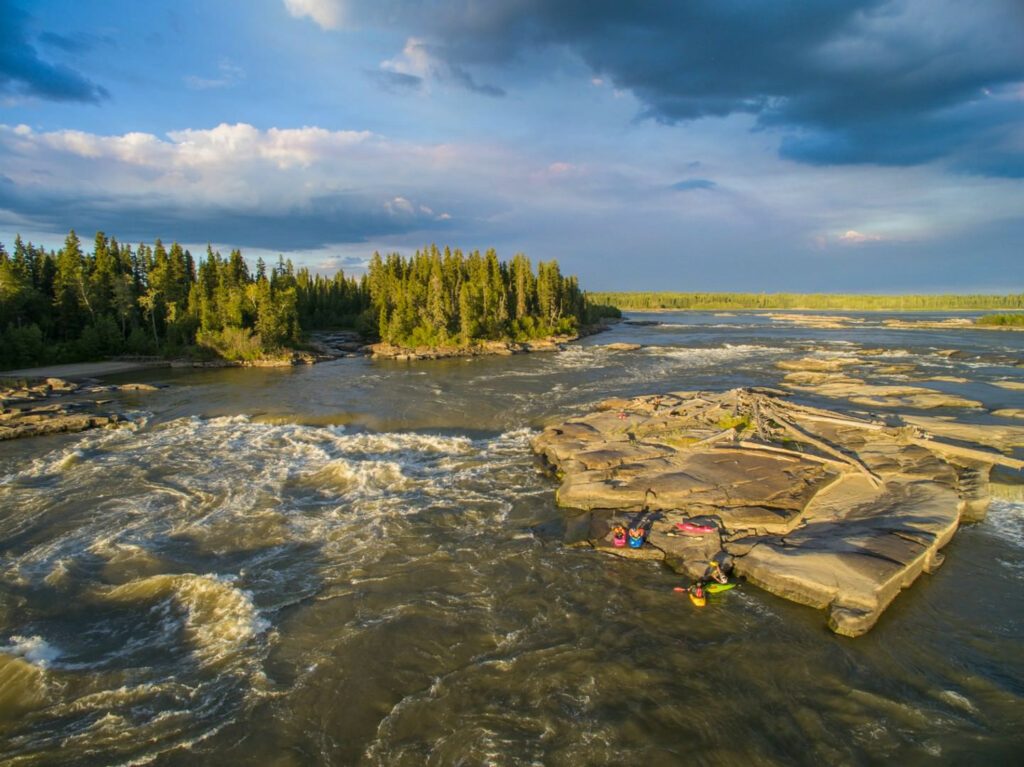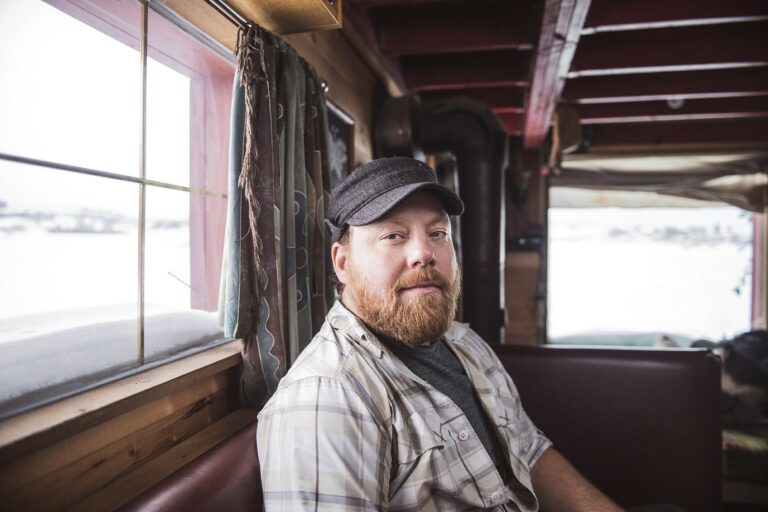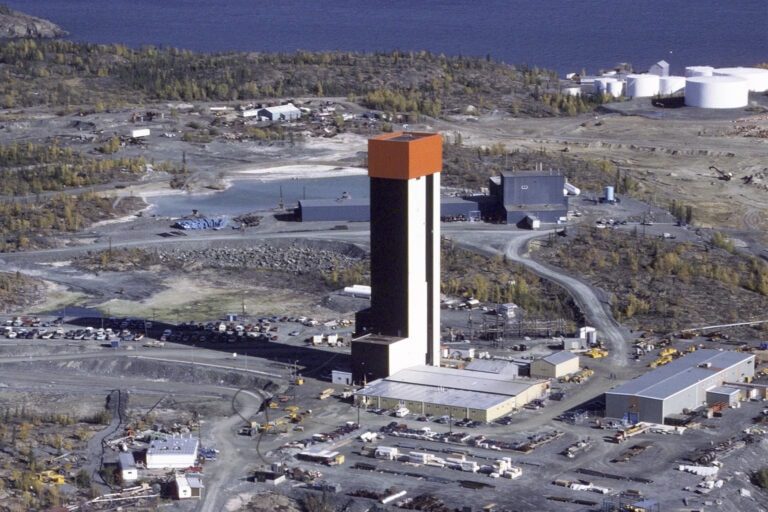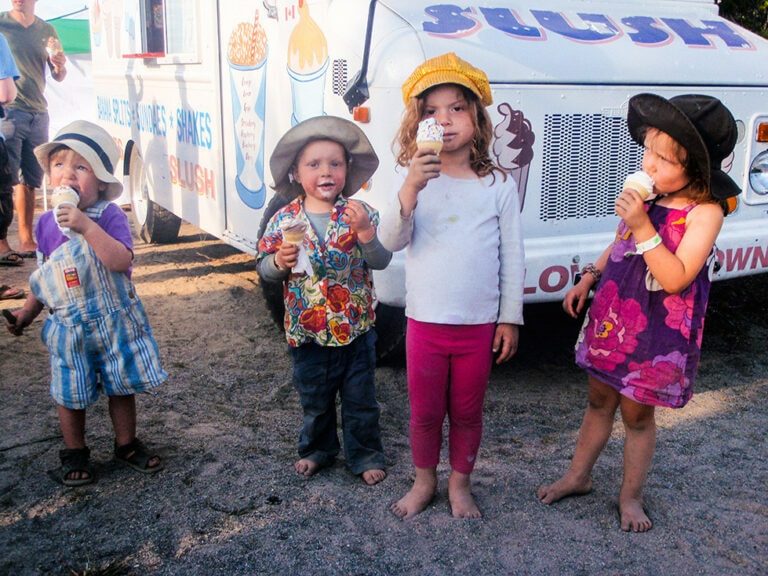If you were to jump into one of the Fort Smith Paddling Club’s older vessels, you might spot a faded sticker somewhere on it that reads,
NO DAM ON THE SLAVE!
These days, the paddling club’s boats are busy, taking locals and visitors alike out to the Playground, Rollercoaster, Molly’s Nipple or any of the other wacky waves on club nights or during the community’s foremost annual summer festival, Paddlefest, which takes place over the August long weekend.
But it wasn’t so long ago that a ragtag group of paddlers was wondering if they’d never get to surf their kayaks on the waves of the Slave River again.
“None of us wanted to see a dam on the river, but we knew that just saying ‘no dam on the Slave’ wouldn’t be effective. You can’t tell people what to think.”
Article continues below advertisement
It’s been close to a decade since the last hydro proposal polarized this small community nesting above four sets of towering whitewater that give the town its traditional Dene name of “Thebacha,” or “below the rapids.”
Around 2008, Alberta-based ATCO Energy and its partner TransCanada began visiting Fort Smith to consult on their proposal to dam the river and harness electricity for the south, promising local jobs, economic spin-offs and a reservoir, in exchange for their world-class rapids.
For those with a passion for the whitewater, it became a historic rallying point.
“It’s hard to fight against corporations that big and powerful, so it was hard to know what to do,” recalls Kirsten Bradley, a former Fort Smith resident and the past president of the paddling club who organized the first incarnations of Paddlefest.
“The issue of a dam was very divisive in town. There were those of us who loved the river and wanted to protect it at all costs, and there were others who really believed that a dam would bring long-term prosperity… None of us [paddlers] wanted to see a dam on the river, but we knew that just saying ‘no dam on the Slave’ wouldn’t be effective. You can’t tell people what to think.”
“You could imagine, the paddler community was not impressed,” says current paddling club president John Blyth. “You realize that, as paddlers, you don’t have any authority over it at all. It’s not your land, you don’t get a say what happens on it. But you can still put in a concerted effort.”
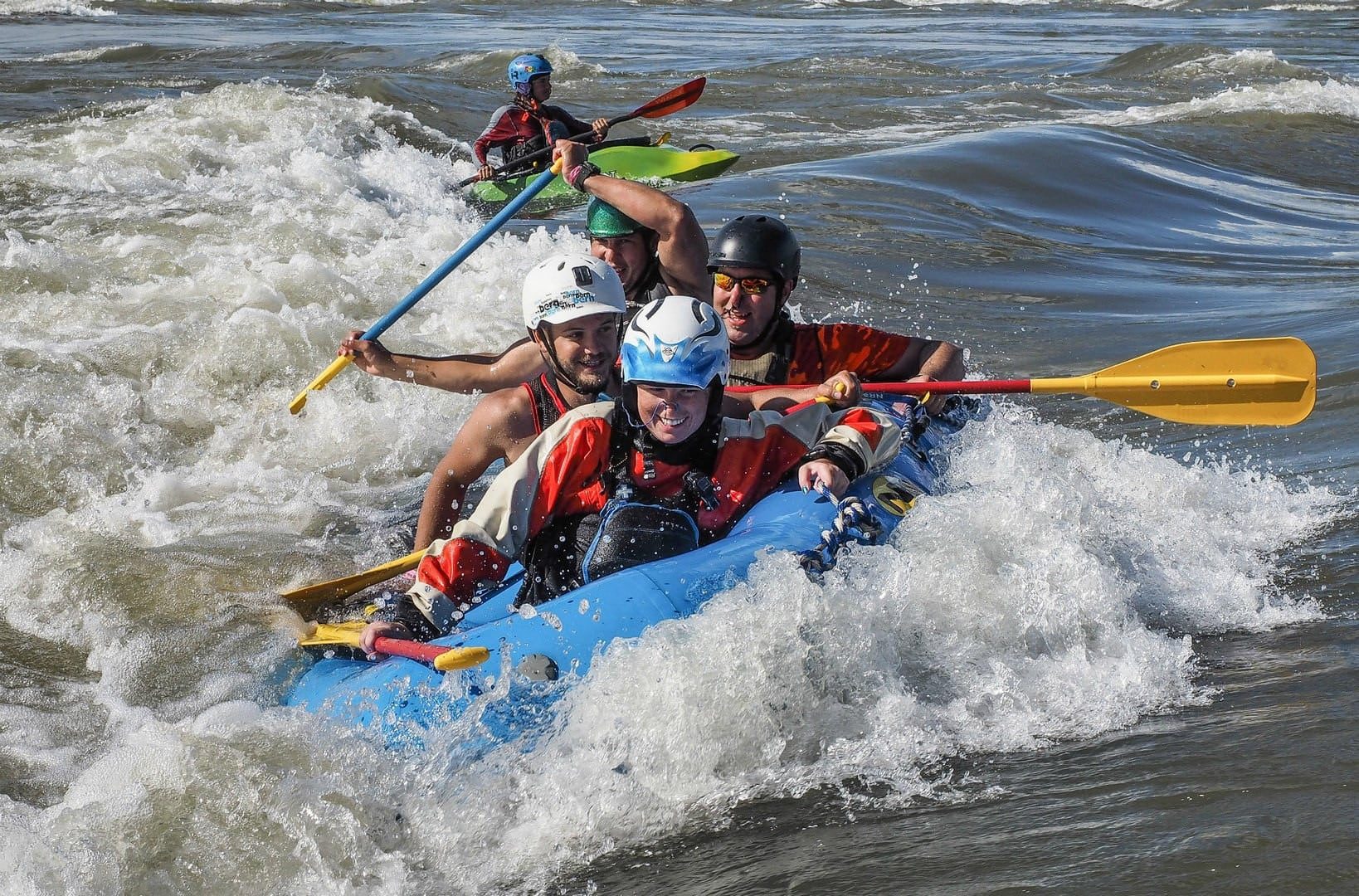
Paddles raised
It wasn’t the first time the community had been asked to sell its river’s soul. The Alberta government first brought the idea of a dam to the town in the early 1980s, but turfed the plan after it was found that the cost of transmission lines and channeling the power through B.C.’s infrastructure made it an economic non-starter.
Every attempt to dam the river has split opinion in the community down the middle, with heightened emotions leading to divisions between families and neighbours, each side digging their heels in, and creating strife in a small town where everyone knows one another.
But there was always at least one segment of the opposition that attempted to lead with a positive alternative: the paddlers.
“The paddlers have been the ones who have sustained over time the efforts to raise awareness of the beauty of the river and its value as a resource for everyone,” says Don Jaque, who helped found Fort Smith’s paddling club in the 1970s and covered the decades of dam debate as publisher of the community newspaper.
The motivation behind the festival has always been use the river, or possibly lose it.
Paddlefest, he says, is part of that lineage. Celebrating its ninth incarnation this weekend, the festival at Mountain Portage is now mainly seen as a fun, family-friendly way to get on the river for a weekend of safe kayaking, canoeing, rafting and swimming. But its birth was certainly political in nature.
“One of our main objectives for Paddlefest was to get more locals coming out to the river. That’s why the festival was always set up with spectators in mind – the flatwater canoe events, kids classes, community feasts, Dene games, rafting and hot dog roasts – all of those things were designed to get community members out to the river,” Bradley says. “We wanted people to come out to the river, have a great time, and see for themselves what a special place it is. Then they could make up their own minds about whether or not a dam was a good idea. In that, I think we were very successful – we started to see more and more people using the river and appreciating it.”
Natalie Kramer-Anderson is one of those people who’ve made the Slave River their home for most of the year. A native of Colorado, a pro kayaker and a scientist who studies the impacts of dams, she is now the lead organizer of Paddlefest in Fort Smith.
She says the motivation behind the festival has always been to use the river, or possibly lose it.
“If you’re not connected with a place, you’re not driven emotionally to help keep it around,” she says. “If you don’t know it’s there, it never affects you. But the more people become familiar with the resource and the beauty of the place around them, the more they get involved.”
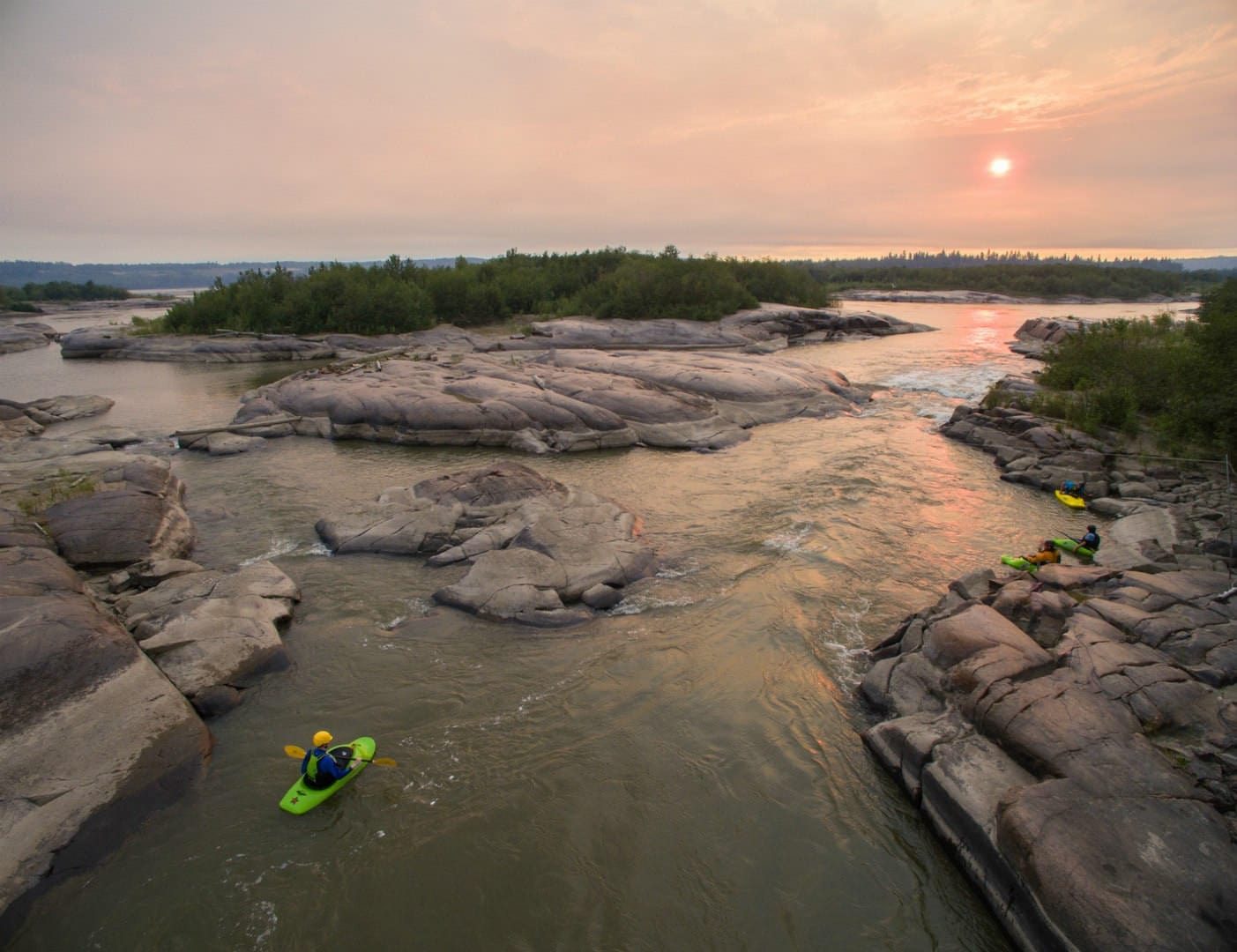
‘The threat is always there’
While an imminent dam proposal is not currently on the table for the Slave River, the possibility — or threat — is always tangible.
ATCO continues to have a strong relationship with leadership in the Salt River First Nation, as an event sponsor and partner on community infrastructure initiatives. And though representatives from Alberta haven’t approached the community on a hydro mission since 2012, Jaque says there are still those on both sides of the border who wish to see a dam on the Slave.
“I’ve talked to highly placed people in the NWT government who have said that Fort Smith should only exist because there is a dam on the Slave River and there is no other raison d’etre to this community; that it’s foolish for the college headquarters to be here and what should be done is a hydro installation on the Slave rapids,” Jaque says.
The NWT government’s hydro strategy eyes numerous sites throughout the territory for possible power generation, including sites on the Mackenzie River and further dams on the already regulated Taltson River system. One of the territory’s more current objectives is to look at investing in a hydro intertie that would be able to transmit some of the NWT’s 11,000 megawatt hydro potential to southern markets. While territorial politicians tend to skirt the contentious issue of a Slave River dam, there’s no doubt that a transmission line waiting at the Alberta border would certainly help bolster such a plan.
“There is a constituency within the NWT government that… would love to have a project that provides a power line to the south that would be the means by which the dams on the Taltson river could market power to the south,” Jaque says.
“That threat is always there. There will always be people who look at the river just as a means of making money.”

A veto and a vision
Francois Paulette remembers the day in October 2010 when his nephew Cheyeanne, then chief of the Smith’s Landing First Nation, vetoed ATCO’s proposal to conduct a feasibility study for a Slave River hydro project.
He had been on the river hunting moose. When he pulled up to the dock with his boat, Cheyeanne was there to greet him. He asked his uncle to attend a private meeting about to take place between himself, council, ATCO and TransCanada.
“We have a vision for the river that ensures it will continue to be a home for our people for all time, and we know many other Northerners share our vision.”
“I will never forget this,” Paulette says. “ATCO’s first response was, ‘I’m glad you’re telling us this now, because if we had spent millions of dollars on this feasibility study, it would have been hard to get out of.’”
“The Slave River has sustained our people since time immemorial,” the 29-year-old chief announced to the public following the meeting. “We have a vision for the river that ensures it will continue to be a home for our people for all time, and we know many other Northerners share our vision.”
“I was so proud of that young man, the chief,” Francois says. “He never mumbled his words. He just laid it out: any future talk of hydro on the Slave rapids was off the table.”
Though ATCO and TransCanada expressed disappointment at the decision, a prepared statement read by ATCO’s VP of hydro development Doug Tenney showed the company would agree to respect the decision.
“Any economic configuration of hydro-electric generation would likely flood a portion of Smith’s Landing First Nation reserve land,” Tenney said. “Smith’s Landing First Nation has determined that their vision for the Slave River is not compatible with large scale hydro development. ATCO and TransCanada understand and respect the legal and constitutional rights of Smith’s Landing First Nation and accept the decision made by Smith’s Landing First Nation.”
For Francois, that vision is not anti-hydro, but rather an understanding that there is other value to the watershed that would be lost with a dam.
“That river has been used historically for thousands of years. The old portages are still marked out. There are archeological sites dating back 4,000 to 8,000 years. It’s also a huge traditional land use area for the Thebatthie Dene,” he says.
“We want to put those lands aside for the development of a heritage and cultural site to be enjoyed by all people, not just for Denesuline, but for all to use because it’s such a beautiful place.”
Since the first year, the paddling club has worked hard to build its relationship with Smith’s Landing First Nation, which is now an official partner of the festival. The club and First Nation routinely offer youth paddling camps to SLFN members, many of whom have become avid kayakers and canoeists.
“It’s a good way to honour the river and our ancestors,” Paulette says of Paddlefest. “It was easy to come together.”

Keeping paddles in the water
Ironically, the constantly nagging fear of hydro has kept the paddling community alive and kicking through what Jaque guesses is at least five generations over 40 years.
“The resolve to sustain a strong paddling community was, in part, because of the threat of a dam,” he says. “That was always one of the motivating factors — along with the fact that we have the best rapids in the world to experience.”
While the decision to build a dam would ultimately fall to Smith’s Landing, whose lands would be most impacted, the festival organizers hope the recreational and tourism potential generated by Paddlefest and other club activities will highlight the alternative economic opportunities to large-scale hydro.
“Part of the rationale for Paddlefest is to make people aware of how wonderful the river is; to get them out and experience it and see for themselves what an amazing place it is,” Jaque says.
“One of the things that has always driven me to be involved in saving the rapids, aside from their incredible beauty, is that Alberta doesn’t really understand what a jewel they have there… I really feel that if they knew more about it, they would value it much more and realize that it’s not something you want to have destroyed by the dam. The incredibly beauty and the white pelicans, it’s so special. So one of my driving efforts was to publicize that into Alberta.”
Much of the frontline work has also been at home, changing local people’s perception of the river. Growing up in Fort Smith, Blyth said the main message was to stay away from the water, or face possible death.
“A lot of people took that to heart and backed away from the rapids,” he says. Though now one of the best kayakers on the Slave, as a kid he had no idea the rapids at Mountain Portage even existed.
These days, Blyth says you can find people using the beaches at Mountain Portage almost daily, playing in the bay or paddling on the wave train. He believes Paddlefest has a lot to do with exposing locals to a corner of their backyard previously unexplored.
“I can tell it has made a difference,” he says.
There has also been a change in view towards hydro as a green energy source, Jaque says. Though around 60 percent of people were likely in support of a hydro project in the ‘80s, he now estimates the scales have tipped the other way, with more residents — especially in the younger generation — opposed to a dam due to the ecological impacts.
Still, no one is ready to put down their paddle in complacency yet. Though it has steered away from its political beginnings, at its heart, Paddlefest is a frontline defence of the river.
“Even though the pressure from ATCO is no longer as strong, the festival has grown out of a desire to be proactive, to push the fact that the rapids are out there,” Kramer-Anderson says.
“It’s a really unique, special place in the entire world,” she says, referring to the Slave River’s station in the Mackenzie system, one of the world’s last unregulated watersheds.
“People should at least go there and experience it to know what they’d be losing.”
A Canadian Tourism video showing some Slave River whitewater action:

